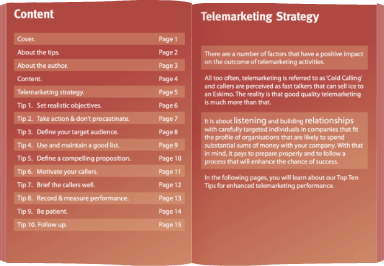TOWII (The only way is Integrated) isn’t as well known as TOWIE but it’s a lot more important when it comes to lead generation.
When you’re running marketing and business development campaigns making decisions is hard in terms of where to spend time and where to invest hard-earned funds. Yet, it’s no different whether you work in a large corporate enterprise, or an SME. The choice is wider but the challenge is the same. How do we ensure bang for buck? How do we magnify response? Where will the best leads come from? How do we ensure ROI? And, what’s the timeframe?
Inbound Beats Outbound
It’s obvious that when warm leads arrive at your door, they will be easier to convert. It’s often said that ‘content is king.’ To a large extent, we are advocates of this, even though our business is outbound marketing. A significant proportion of our leads simply come to us through Google. And, those leads are both within the UK, and internationally. Some are small, but many are from large enterprises. That’s because our knowledge bank is full of blogs, videos, infographics, and other content that provides insight into topics in which our clients have an interest. Yet, if we didn’t back that up by regularly engaging with prospects through email, and phone, few would convert.
But, demand-driving content takes time. Hence, finding a number of sources of leads to fill the sales funnel is essential.
Build a Robust Sales Pipeline.
The source of those leads can take various forms including:
-
-
- Contacting current customers for cross-sell and up-sell
- Re-engaging lapsed customers
- Pure prospecting for new business
- Inviting prospects to events and webinars
- Securing quotes
- Increasing LinkedIn connections and securing leads
- Reaching out through LinkedIn direct messaging
- Generating insight for decision-making
-
The list goes on and on. Lead generation is a multi-faceted, multi-discipline activity. Whether it begins with networking and extends to straight advertising, business development can incorporate a variety of tools, channels and techniques.
How many Touch Points are needed?
It’s a generally well-accepted principle amongst marketing folk that there needs to be a number of customer touch points. That’s before a prospective client will consider bringing on new providers. In some ways though, we could liken the statement about touch points to the old joke ‘How many…. does it take to change a lightbulb?’
It’s a heavily marketing-jargonized expression that asks us all to consider how many times a prospect needs to see you or hear from you before they will engage. I’m sure that there has been a lot of empirical research on the subject. However, whether it’s 2, 4, 6 or 8, the reality is that, at any given time, only a small percentage of prospects will engage. Every so often, you get lucky and hit the bullseye first time. Sometimes a chance contact will lead to immediate opportunities. More realistically though, it’s likely that there will be a period of consideration and a beauty parade of prospective suppliers before the purchase of goods and services where a sizable value of sale is concerned.
The Lead Generation Headache
If only every method of business development worked like a dream. Sadly, that’s rare. Even big brands deploy a variety of different tools and channels in order to identify fresh business opportunities to feed their hungry sales teams.
Large companies recognise the need to profile and segment their audiences, to craft compelling propositions and messaging and to use a multi-channel approach. Organisations spend a lot of money crafting white papers and videos and distributing them across social media platforms. They hire expensive sales people. They spread the net wide.
The reason they do this is not least that many prospective customers are time-poor and/or locked into supplier contracts. They have other priorities. There are a multitude of different reasons why customers don’t buy and specifically why they won’t buy from you. There are also often multiple routes into each company and multiple decision-makers.
The other thing is that, simply, no channel is guaranteed to work. Customers engage at different times, in different ways at different speeds and frequencies with different channels. They are busy and some are just plain not interested in what you have to offer.
Ratios Count
Whether you’re using straight advertising, sponsored ads on Google, Facebook or LinkedIn, email marketing, LinkedIn InMail and automation tools, telemarketing or some other route to market, there will be a degree of wastage. It’s inevitable that a proportion of your target market won’t respond immediately and some will never engage.
Due to the elusive nature of target decision-makers, it’s important to reach out using different methods and to do this consistently. Test and measure are the bywords of marketing. There’s no point in flogging a dead horse. It’s a case of identifying the most appropriate channels for your target audience, the value of sale and the importance of the client.
However, it’s important to consider what drives response. Is what you’re offering innovative or commoditized? Do you have something tailored for a particular sector or is your solution vanilla? Do your credentials and case studies work in your favour? The more focused you can be, the more chance you have of success, assuming of course that you back the right horse!
Focus is Crucial
There are a myriad of factors that influence response. When I run telemarketing training, I always emphasize that you can’t hit a target that you cannot see. Equally, you won’t hit the target if you don’t fire at it. Ultimately, business development cannot function without proper evaluation and identification of the target market. And, you need to be active in trying to reach your prospective customers. So, a strategy of sitting and waiting for customers to come to you won’t work for most. Momentum is essential. By all means, spend time considering your audience, what prospects are likely to respond to. Certainly, consider messaging and putting together your ‘elevator pitch’ for your website, brochure and sales patter. But, don’t let inertia stop you.
What does Integrated Marketing Look Like?
That’s all well and good you might say. We don’t have unlimited funds. That’s true. If you’re a micro-business or one that’s just starting out, you will need to focus. That focus should be on identification of the sectors, companies and job functions that would logically use your services. Then, consider how to reach them. Are there industry networking events (online and offline)? Who could recommend you? Are there groups on LinkedIn you could join?
If you can easily identify your audience on LinkedIn, then perhaps now’s the time to write a targeted blog or to produce a relevant video. Share that on your profile, in relevant groups and send it to specific individuals. Connect with the right people. It’s worth getting LinkedIn Sales Navigator to be able to accurately refine your search and build a target list. Given that only around 15-25% of targets will connect on the platform, consider using InMail to bolster your activity.
Consistency and Momentum
To make it work, you need to be consistent. Giving up after a week or two is a big mistake. There are plenty of tools nowadays that can semi-automate some of your work on LinkedIn. Think about deploying something like this to help you. If you know your target, email marketing may play a role. It’s relatively inexpensive, subject to the volume of data you use, and if you can once again identify the target audience, it can be effective albeit response rates can be very low.
It also makes sense to reach out on a peer to peer basis. Take the conversation offline. Make a call to those that connect and respond. If you send out 500 targeted LinkedIn invitations and 75 connect with you, think about finding the phone number and calling them to set up a virtual coffee. If you have something of genuine interest, a percentage will respond.
Activity or Inactivity?
Ultimately, integration will differ by sector and by the nature of the proposition. There are so many different channels. Budget naturally plays a large role too. It is far from simple. Doing nothing is simple. Nothing is guaranteed. You have to put in the hard yards as they say. It all starts with the task of target market identification. Once you know this, you’ll understand how big the pool is to fish in. It will make budgeting easier too. If there are 1000 targets, you can calculate how much it would take to reach them on each channel and then make your decision accordingly.






